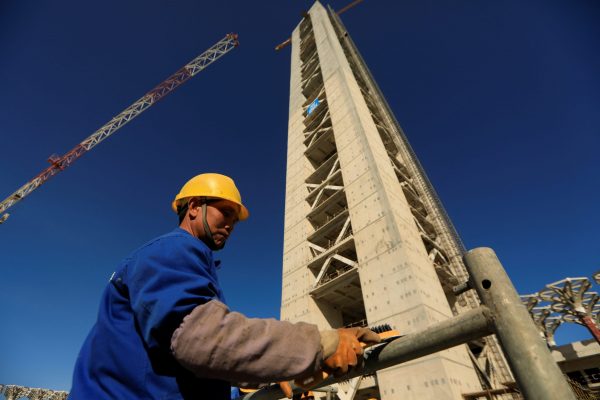On one hand, Western media often paints China as a resource-seeking and corruption-inducing player. The New York Times reported that ‘China is worsening the climate crisis’ by funding 50 new coal plants across Africa. Subsequent analysis of these articles showed that the reporters stretched, misinterpreted and sensationalised the data. This case may be specific to sub-Saharan Africa, but the analysis demonstrates Western media outlets’ tendency to give short shrift to getting the empirics right and to make use of historically entrenched archetypes to mischaracterise China and the developing world.
This is not to say that Chinese FDI is without flaw. China’s manufacturing export economy relies on massive inputs of resources, and in some cases Chinese FDI aimed at securing these inputs propagates natural resource dependency, deindustrialisation and environmental degradation in the host country. Chinese economic engagements in Africa are also sometimes used to generate votes for Beijing in the United Nations — votes that have constrained human rights and multilateral interventions. And aid from Beijing may also circumvent Western sanctions on ‘problematic’ states.
Western state agencies and multinationals are guilty of similar unethical behaviour when situations suit their needs. Western countries invest in authoritarian governments with questionable human rights records, and Western agencies and multinationals frequently circumvent legal and ethical boundaries when the need arises.
In reality, Chinese FDI both cooperates and competes with the West. China’s production of cheap manufacturing goods subsidise Western consumption during a time of growing income inequality. Export manufacturing enables China to purchase US treasury bonds (which finance the US trade deficit).
The PRC and Chinese media outlets also fail to capture this nuance. They have portrayed Chinese FDI as completely benign since as early as the Hu Jintao era. Now as an alternative investor and financier to the West, new political conditions and geo-economic considerations have exacerbated Beijing’s desire to portray their FDI as peaceful. The PRC characterises the Belt and Road Initiative (BRI) as capable of generating stability and prosperity in recipient regions. Across the world, Chinese embassies, Confucius Institutes and delegates echo these depictions.
This rhetoric contradicts China’s increasingly alarming behaviour under Xi Jinping. Following China’s recent economic slowdown and leadership transition, Beijing altered the behaviour of Chinese FDI to help rebalance from export-led to consumption-driven growth. This included diversifying FDI acquisitions away from solely resource investments to a broad portfolio of strategic assets across a variety of sectors.
While China previously allowed loan restructuring for developing countries that struggled to repay their debts, Beijing recently decided to acquire equity returns in Sri Lanka, Djibouti and Pakistan. These actions signal that Beijing is according greater political consideration to FDI. With the future of US leadership in the Asia Pacific uncertain under the Trump administration and with China’s increasingly pronounced role in the region, the BRI appears to be a bid to compete for power across a rapidly changing developing world.
Amid these grand narratives, academics have studied Chinese FDI in more fruitful ways.
Chinese FDI can be disaggregated into three different types. First, there is Chinese state investment, which involves agreements to build infrastructure and mega-facilities via official development assistance. This type of investment is characterised by significant involvement of Chinese state-owned enterprises or of well-connected often larger private Chinese companies, the sourcing of Chinese labour and goods for the project and potential political and economic returns for the loan.
Second, there is private investment by Chinese companies that are fully- or partially-owned by Chinese citizens. Private investment tends to work within the host country’s rules and structures. These specific arrangements are often smaller, invest in non-strategic sectors and value profit making above all else. As a result, they can often operate profitably even in the presence of inter-state hostility.
Last, there is the investment of illicit Chinese capital, which occurs when Chinese investors bribe the host country’s politicians to operate illegally in strategic and controversial sectors. These investments can generally be found in the host country’s informal economy.
Simplified depictions by Western and Chinese actors ignore what anthropologists have long argued about Chinese investment: different owners, different contexts and different ideas generate their own distinct patterns of investing.
Regional variation also matters. For example, China’s support of numerous anti-colonial struggles during the Cold War paved the way for Beijing’s strong involvement in sub-Saharan Africa. Southeast Asia’s own Chinese population mediates Chinese FDI in numerous ways. During Latin America’s neoliberalisation in the late 1990s, China became one of the region’s biggest export markets.
There is variation among Chinese investment activity in terms of asset specificity, sectoral distribution and investment size. There is no singular characteristic ‘Chinese investor’. Instead, there is a multiplicity of national and regional state-owned enterprises, provincial entrepreneurs and private investors.
Rather than the essentially benevolent investment stream portrayed by Chinese actors or a grand plan directed by the Chinese government as often depicted by Western media outlets, Chinese FDI can be more usefully studied by investment type, host country context and regional variation.
Alvin Camba is a doctoral candidate at the Department of Sociology, Johns Hopkins University. He also writes at the Alitaptap Collective.


Funny,, I don’t recall US media being in support of countries who did not want to be dependent on Western aid or not have to worry about US government and businesses overthrowing them because they tried to have policies that benefitted the people not the wealthy elite and corporations. I don’t recall the US media attacking both government and corporate corruption and corruption by wealthy people since the USA got its independence plus being advocates for political, social, and economic reform. The USA is no better when it comes to protecting its own investments
Excellent analysis. One question, what is your approach to private Chinese foreign investment?